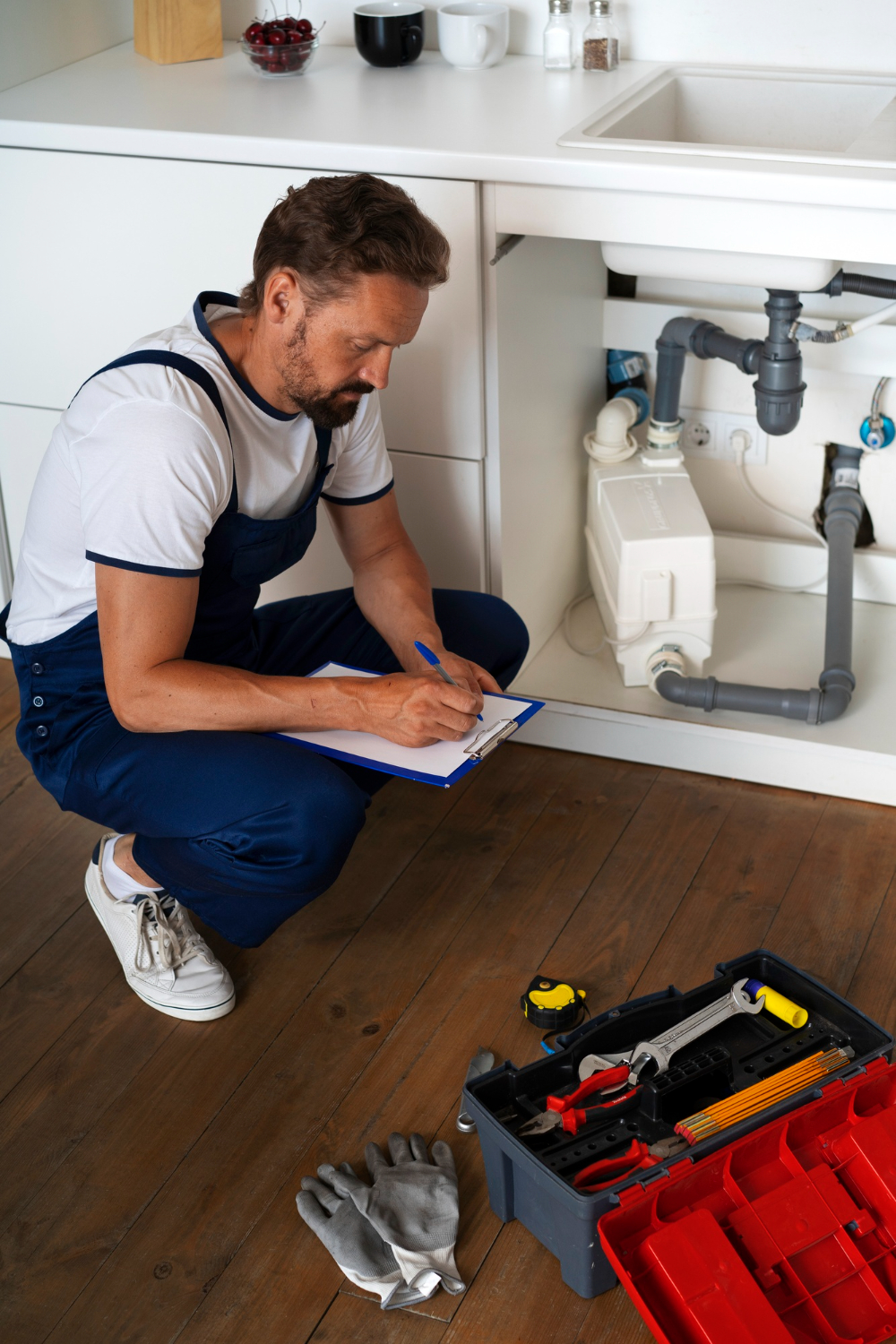DIY drain cleaning methods typically offer only a surface-level solution. The clog might seem gone today, but without addressing the root issue, you’ll likely face the same problem again soon. This cycle of temporary fixes can lead to more serious home improvement headaches.
Chemical drain cleaners also come with downsides for your plumbing system. The heat generated by these products can weaken PVC pipe seals over time. For lasting results in your home improvement efforts, it’s worth considering whether a more comprehensive approach to drain cleaningmight better solve your clogging issues.
Understanding Clogs and Drain Cleaning
Clogs form in drains for various reasons and can cause significant plumbing issues if not addressed properly. Drain-cleaning methods range from simple home remedies to professional services that remove buildup and prevent future blockages.
Types of Clogs
Hair clogs are common in bathroom drains, especially showers and tubs. When combined with soap scum, hair creates stubborn blockages that trap other debris. Soap scum forms when soap combines with minerals in water. This chalky residue accumulates inside pipes, especially in areas with hard water. Mineral buildup from hard water also creates scale on pipe walls, narrowing pipes gradually and creating rough surfaces where other debris can collect more easily.
Grease and fat are major culprits in kitchen drains. When hot oils cool down, they solidify and stick to pipe walls, narrowing passages for water flow. Food particles then get caught in this sticky substance. Foreign objects like toys, hygiene products, and excessive toilet paper can cause immediate blockages. These often require mechanical removal rather than chemical solutions.
How Drain Cleaners Work
Chemical drain cleaners work through different mechanisms depending on their composition. They fall into three main categories:
- Caustic cleaners contain sodium hydroxide (lye) that creates heat and turns grease into soap-like substances that dissolve in water. These work well on kitchen clogs but can damage certain pipes.
- Acidic cleaners use sulfuric acid or hydrochloric acid to dissolve organic matter like hair and food waste. These are the strongest and most dangerous type, requiring careful handling.
- Enzymatic/bacterial cleaners use bacteria or enzymes to break down organic material naturally. They work more slowly but are safer for pipes and the environment.
Mechanical methods include:
- Plungers that use pressure and suction
- Drain snakes that physically break up or retrieve clogs
- Hydrojetting, which uses high-pressure water to clean pipe walls
Impact on the Environment
Chemical drain cleaners pose significant environmental concerns, as strong chemicals like sodium hydroxide and sulfuric acid can harm aquatic life when they enter waterways through sewage systems. These substances alter water pH and can remain active long after use.
Plastic packaging from drain cleaning products contributes to waste problems, too. Most bottles cannot be recycled due to chemical residue contamination. Also, when used frequently, chemical cleaners can damage pipes, leading to leaks and requiring pipe replacement. This creates additional environmental impact through the manufacturing and disposal of plumbing materials.
Eco-friendly alternatives include:
- Baking soda and vinegar mixtures
- Enzymatic cleaners with natural bacteria
- Mechanical methods like plungers and snakes
- Regular hot water flushing as preventative maintenance
Manual Techniques for Unclogging Drains
When facing a stubborn clog, several hands-on methods can help restore proper flow to your drains without calling a professional. These approaches range from using simple household tools to applying natural solutions that break down blockages.
Using a Plunger
Plungers are effective first-line tools for clearing clogs in sinks, tubs, and toilets. For best results, ensure there’s enough water in the basin to cover the plunger cup. This creates the proper seal needed for effective suction. To use a plunger correctly, position it directly over the drain opening and push down firmly, then pull up sharply. This creates pressure that can dislodge the clog. Repeat this motion 5-10 times.
For stubborn clogs, maintain a steady rhythm of pushing and pulling. The pressure changes in the pipe can break up blockages effectively. If your sink has an overflow opening, cover it with a damp cloth to increase pressure. For double sinks, plug the second drain for the same reason.
Snaking the Drain
A drain snake (or auger) is a flexible tool that reaches deeper into pipes than a plunger can. Most household clogs occur within the first 15 feet of piping, making a hand snake suitable for DIY work.
Insert the snake into the drain opening and turn the handle clockwise while pushing it further into the pipe. When you feel resistance, you’ve likely hit the clog. Continue turning the snake to either break up the blockage or hook onto it. Pull the snake out slowly, bringing the clog material with it. For bathroom sinks, you may need to remove the P-trap first to access the pipe more directly. Keep a bucket underneath to catch any water.
Hot Water and Natural Methods
Boiling water is a simple yet effective method for clearing minor clogs, especially those caused by grease or soap buildup. Carefully pour the hot water directly into the drain in stages, allowing each pour to work through the pipes.
For stronger cleaning power, the baking soda and vinegar methodoffers a non-toxic alternative to chemical cleaners. Pour half a cup of baking soda down the drain, followed by half a cup of vinegar. The fizzing reaction helps dissolve organic materials causing the clog. Cover the drain for 15-30 minutes, then flush with hot water. This method works well for slow drains and minor blockages.
Preventative Measures and Maintenance
Preventing drain clogs is far easier and less expensive than fixing them after they occur. Regular maintenance keeps your plumbing system functioning properly and helps avoid emergencies.
Proper Disposal of Waste
Never pour grease or cooking oils down kitchen drains, as these substances cool and solidify in your pipes, creating stubborn blockages that are difficult to remove. Instead, collect grease in containers and dispose of them in the trash. Coffee grounds, eggshells, and starchy foods should also stay out of drains. These items don’t break down easily and can cause drainage issues when they accumulate in your plumbing system.
In bathrooms, hair is the primary culprit for clogs. Use drain covers to catch hair before it enters the drain pipe. We also recommend wiping excess toothpaste into the trash rather than rinsing it down the sink where it can contribute to soap scum buildup.
Professional Plumbing Services
Schedule annual professional drain cleaningas part of your home improvement routine. Plumbing contractors have specialized tools that can thoroughly clean PVC piping and other drain materials beyond what consumer products can achieve. Technicians will also inspect your vent pipes and entire drainage system for early signs of trouble.
Hydro-jetting services offer the most thorough cleaning possible. This process uses high-pressure water to scour the inside of pipes, removing years of buildup that traditional drain cleaners can’t touch.
For older homes or properties with recurring drainage issues, a professional assessment can determine if there are structural problems requiring attention rather than just routine maintenance.
Get in touchto schedule a professional inspection and cleaning of your drainage system.










